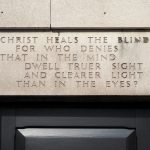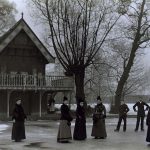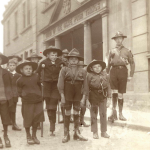No drinking, brawling or blasphemy
Some of the rules imposed on those using almshouses were common sense, others seem draconian to us now, but places were limited, and people who were accepted probably felt very lucky.
 Chiswick House, London
Chiswick House, London
 Maison Dieu, Faversham
Maison Dieu, Faversham
 Liverpool School for the Indigent Blind, Liverpool
Liverpool School for the Indigent Blind, Liverpool
 Langdon Down Museum of Learning Disability, Teddington
Langdon Down Museum of Learning Disability, Teddington
 The Royal School for Deaf Children, Margate
The Royal School for Deaf Children, Margate
 Guild of the Brave Poor Things, Bristol
Guild of the Brave Poor Things, Bristol
 St Saviour’s Deaf Church, Acton
St Saviour’s Deaf Church, Acton
 Grove Road Housing Scheme, Sutton-in-Ashfield
Grove Road Housing Scheme, Sutton-in-Ashfield
Our volunteers have been working hard and having great adventures along the way. Browse the stories below or click on an individual image to see more from an individual volunteer.
Some of the rules imposed on those using almshouses were common sense, others seem draconian to us now, but places were limited, and people who were accepted probably felt very lucky.
At last our researchers get to see inside the building they have been learning about in the archives for eight months – and respond to it creatively.
Ann continues tracing almshouses beyond the medieval period, and discovers what happened to pilgrims who fell mortally ill.
Our film will be screened in Bristol in early December 2016.
Some hospitals survived for hundreds of years, providing sanctuary – and gathering idiosyncratic rules and one or two myths.
At a time of huge national upheaval during and after the Civil War, was there anyone around who still cared about England’s almshouses? Yes.
Join us for the launch of a new interactive trail of deaf and disabled people’s histories around Liverpool on Monday 21st November.
Work with artist and heritage professional James Aldridge and use your senses and imagination to bring the Guild’s history to life.
One challenge of the History of Place project has been thinking about how to engage all five senses in storytelling. Creative workshops at the Royal School for the Blind, Liverpool explored how to transport listeners’ imaginations to tunnels and 18th century cargo ships using sound and smell.
Grace Swordy describes the film a group of young people helped to make during August 2016 in Bristol, exploring and imagining life at the Guild a century ago.